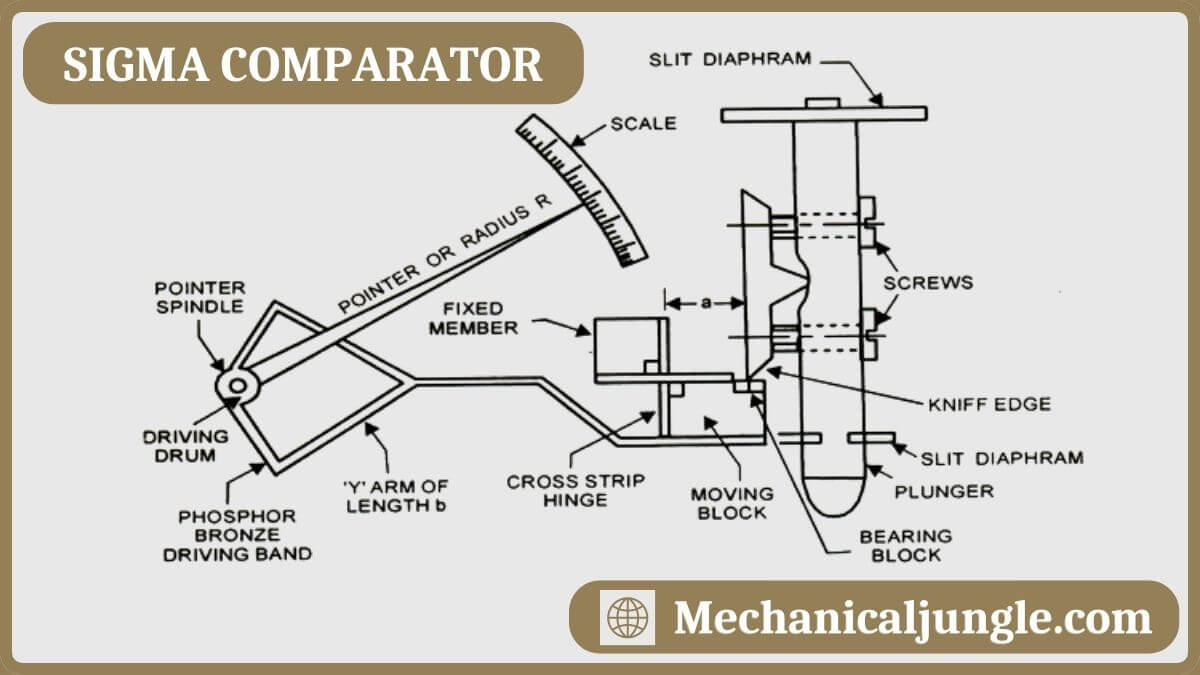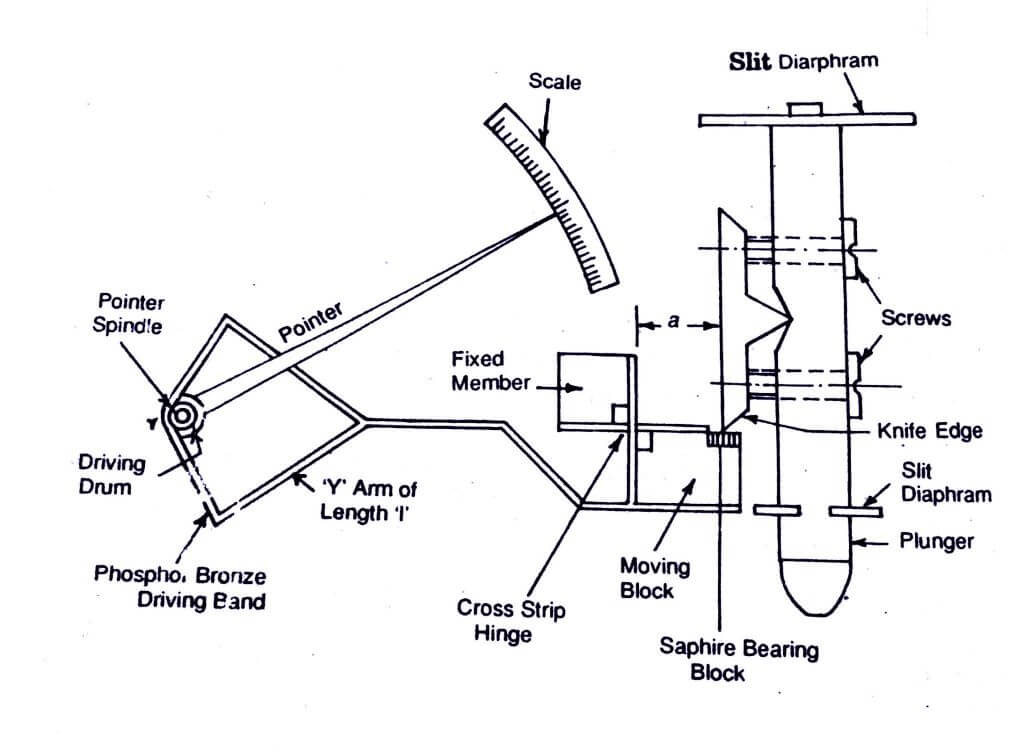
What Is Sigma Comparator?
- The Sigma Comparator Is a Mechanical Comparator Commissioned by an Equipment Manufacturing Company in the USA.
- They Are Mainly Used to Measure the Surface Roughness by Calculating the Dimensional Difference Between the Measured Surface and the Standard Value of the Surface Material.
- A Magnification Range of About 300 to 500 Is Achieved During This Comparator.
Construction of Sigma Comparator

- The Plunger Slit Is Mounted on the Diaphragm to Give Frictionless Linear Movement. The Knife-Edge Is Fixed Over It, and a Cross Strip Is on the Face of the Moving Member of the Hinge.
- Optionally a Moving and Fixed Member at Right Angles to Each Other Consists of Thin, Flexible Strips. in This, There Is a Moving Component That Carries a Lightweight Y-Type Fork Arm.
- This Phosphor Is Attached to the End of a Thin Ribbon of Bronze, Which Is Rounded into a Small Drum.
- This Drum Is Placed on the Pointer, Which Is Included with the Pointer.
- If There Is a Vertical Displacement, It Causes the Pointer to Rotate Through the System.
Applications of Sigma Comparator
Here, the different applications of the sigma comparator are as follows:
- Sigma Comparator Is Used in Selective Assembly.
- It Can Also Be Used in Mass Production.
Advantages of Sigma Comparator
Here, the different advantages of the sigma comparator are as follows:
- It is cheaper in price than other comparators.
- It does not require any external power source to work.
- It has a bold scale and large pointer, so the measured value can be easily noted.
- It is small in size & easily portable.
- It is very easy to operate.
Disadvantages of Sigma Comparator
Here, the different disadvantages of the sigma comparator are as follows:
- Developed Friction Is High in It, Which Affects the Accuracy.
- As with many Mechanical Components, the Possibility of Wear and Tear Is High.
- This Device Has a High Probability of Parallax Error.
- Sigma Comparator Also Develops Vibration.
FAQs about Sigma Comparator
What is a Sigma Comparator used for?
A Sigma Comparator is primarily used to measure surface roughness by comparing the dimensional difference between a measured surface and a standard surface value.
How does a Sigma Comparator work?
It employs a plunger and diaphragm system for frictionless movement, with a knife-edge and cross strip mechanism to detect vertical displacements, translating them into pointer movements for measurement.
What magnification range does a Sigma Comparator achieve?
Typically, a Sigma Comparator achieves a magnification range of about 300 to 500.
What are the advantages of using a Sigma Comparator?
Advantages include its affordability, independence from external power sources, ease of operation with bold scales and large pointers, compact size for portability, and straightforward usability.
What are the disadvantages of a Sigma Comparator?
Disadvantages include higher friction leading to potential accuracy issues, susceptibility to wear and tear due to mechanical components, and the possibility of parallax errors and vibrations affecting measurements.
Where is a Sigma Comparator commonly used?
Sigma Comparators find applications in selective assembly processes and mass production environments where precise dimensional measurements are critical.
How reliable are measurements taken with a Sigma Comparator?
While generally reliable for surface roughness measurements, users must be cautious of potential errors such as parallax and mechanical vibrations affecting the accuracy of readings.

